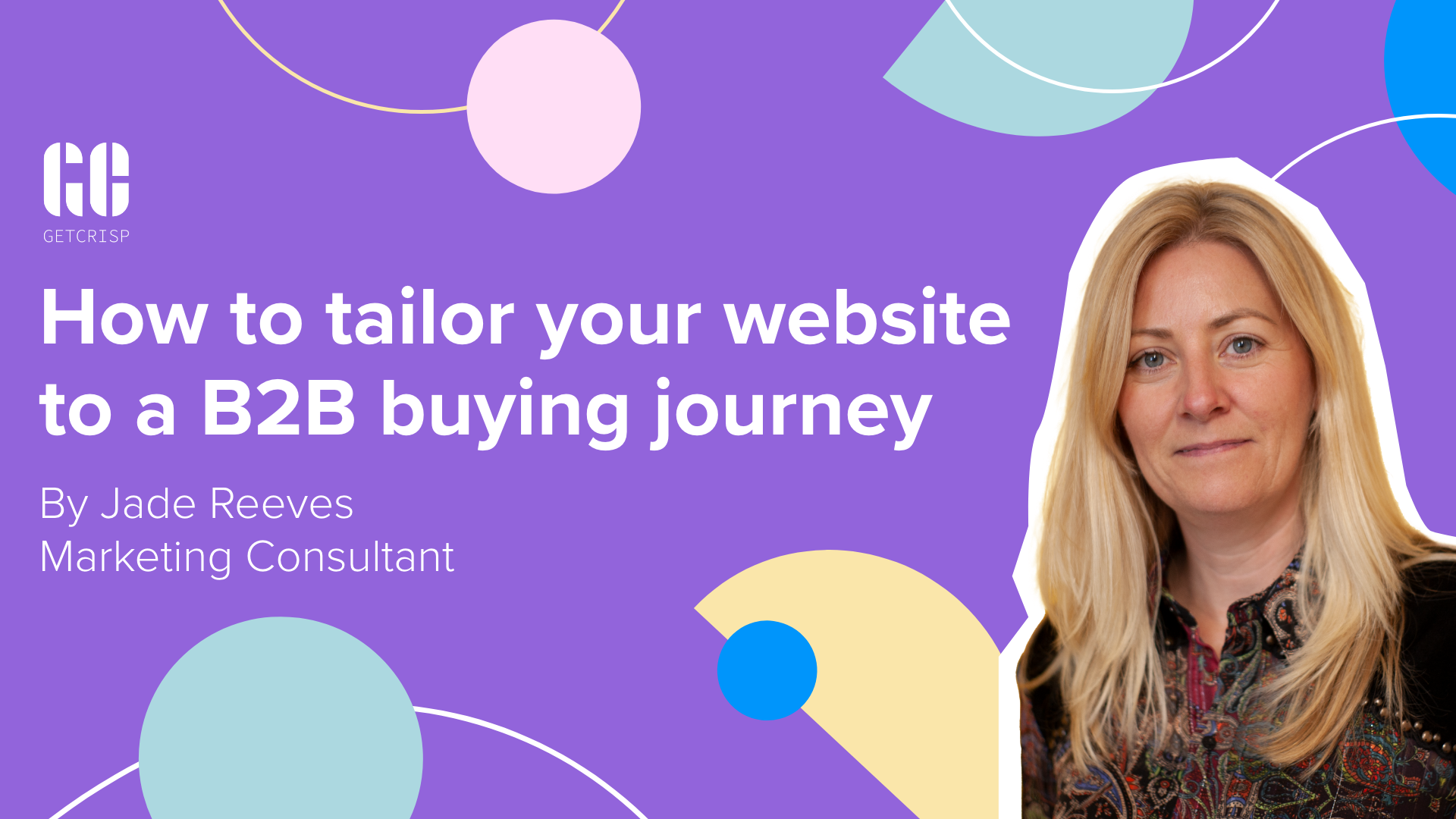According to Gartner, the average decision-making unit in a business is made up of six to ten people. Just think about that for a second.
In a B2C business, you’re typically marketing to a decision-making unit of one person, who knows what they want to buy. The purchase they make might be instinctive, like a takeaway, or a bit more considered, like a car, but you’ve only got one person to impress. In B2B, you’ve got six to ten.
Our point is that when you’re dealing with such a radically different buying unit, you’ve got to have a different approach to your marketing. Nowhere is this truer than on your website.
If you’re concerned that your website might not be appealing to the right audience, we’re here to help. Today we’ll break down some of the key differentiators between a B2B website and a B2C one, and the steps you can take to tailor your site to your ideal customer’s buyer journey.
Give more reasons to dig deeper
In B2B, buying cycles are longer because decision-makers need time to do their own research. Each person in the decision-making unit has their own priorities, so they require detailed information to make the right call. In B2B you can’t just claim to be the best in your field and back it up with a few five-star reviews, you have to walk the walk.
B2B websites need informative content to back up their claims. This can include blog posts, service pages or downloadable guides. Not only does this help visitors make informed decisions, but it also boosts your SEO.
Ensure your content is packed with relevant keyphrases to improve your search visibility. You can learn more about using the right search terms in our previous blog post.
Always offer opportunities to communicate
B2B purchases typically take longer, often requiring several touchpoints to move a prospect through the sales funnel.
Offering multiple ways to connect through your website – like live chat or strategically placed calls-to-action (CTAs) – will help accelerate this process. Make it easy for prospects to reach out with questions or book a call at any point.
The more accessible and responsive you are, the quicker you can build a relationship with potential clients and guide them through the buying journey.
Make sure everything lines up
Inconsistencies across your digital channels can raise red flags, your customers will look for the finer details. If your website’s messaging doesn’t align with what you’re posting on social media, or if different pages of your website contradict one another, potential customers may think twice about doing business with you.
Ensure all your content is aligned. From product descriptions to tone of voice, your website, social media, and marketing emails should all deliver a cohesive message. Decision-makers are likely to check multiple sources, so don’t give them any reason to doubt your professionalism.
First impressions still count
While B2B buyers take longer to research, first impressions are still crucial. A slow-loading website, confusing navigation, or missing key information can deter potential leads before they’ve had the chance to engage.
Make sure your website is fast, clean, and professional. Ensure all the most relevant information, including contact details, are easily accessible from the homepage. Your audience should feel confident they’re in the right place as soon as they arrive.
Use Case Studies
Highlight real-world results with detailed case studies that showcase how your solutions helped others overcome problems. Focus on the benefits your customers experienced and provide an option to download case studies for those who prefer to review them offline. This adds credibility and gives potential clients confidence in your expertise.
Case studies are a powerful tool for building trust. Prospects want to see that companies like theirs have faced similar challenges and found solutions through your service.
SOME jargon is ok
B2B buyers are likely to be relatively well-informed on your service, so some technical language is fine. However, don’t overwhelm your audience with jargon. Instead of focusing purely on features, highlight the benefits and solutions your products provide.
The goal is to communicate effectively, not alienate your audience with overly complex terminology.
Analytics are crucial
Because B2B purchases take longer and cater to a niche audience, traditional traffic metrics may not tell the full story. Instead of just looking at page views, pay attention to metrics like time spent on page, return visits, and which content is most consumed.
Using tools like Google Analytics and Search Console can help you track these behaviours and identify which pages or resources are resonating with your audience. Are they returning to your site to revisit specific content? These insights can help refine your strategy and improve the overall effectiveness of your website. Found these tips useful? Have any questions about your own website? Feel free to get in touch with a member of the team here at GetCrisp.
